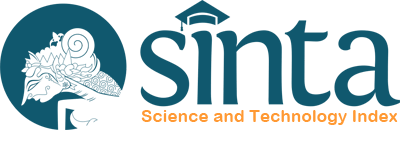Analisis Gen Cytochrome Oxydase-1 (CO1) untuk Konfirmasi Status Taksonomi Burung Srigunting Sumbawa (Dicrurus, Dicruridae)
Abstract
Keywords
Full Text:
PDFReferences
Aliabadian, M., Beentjes K. K., Roselaar, C. S. K, van Brandwijk, H., Nijman, V. & Vonk, R. (2013). DNA barcoding of Dutch birds. R. ZooKeys, 365, 25-48.
Astuti, D. & Sulandari, S. (2010). The DNA sequence performance of COI gene in white cockatoos (Cacatua, Psittaci-formes). Treubia, 37, 1-14.
Barreira, A. S., Lijtmaer, D. A. & Tubaro, P. L. (2016). The multiple applications of DNA barcodes in avian evolution-ary studies. Genome, 59, 899–911.
Bilgin, R., Ebeo?lu, N., ?nak, S., K?rp?k, M. A., Horns, J. J., Cagan, H. & Seker-cioglu. (2016). DNA barcoding of birds at a migratory hotspot in Eastern Turkey highlights continental phylo-geographic relationships. PLOS ONE, 11 (6), e0154454. doi: 10.1371/journal.pone.0154454.
Campagna, L., St Clair, J. J. H., Lougheed, S. C., Woods, R. W., Imberti, S., & Tu-baro, P. L. (2012). Divergence be-tween passerine populations from the Malvinas – Falkland Islands and their continental counterparts: a compara-tive phylogeographical study. Biol. J. Linn. Soc. 106, 865–879.
Cicero & Jonson (2001). Higher-level phylog-eny of New World vireos (Aves: Vire-onidae) based on sequences of multi-ple mitochondrial DNA genes. Mo-lecular Phylogeny and Evolution, 20 (1), 27-40.
Coates, B. J. & Bishop, K. D. (2000). Panduan lapangan burung-burung di kawasan Wallacea: Sulawesi, Maluku dan Nusa Tenggara. BirdLife Inter-national. Indonesia Programme & Dove Publication. Indonesia. 246p
DeFilippis, V. R. & Moore, W. S. (2000). Resolution of phylogenetic relation-ships among recently evolved species as a function of amount of DNA se-quence: An empirical study based on Woodpeckers (Aves: Picidae). Molec-ular Phylogeny and Evolution, 16 ( 1), 143-160.
Dickinson, E. C. (eds). (2003). The Howard and Moore complete checklist of the birds of the world. London: Christo-pher Helm. 1039 p.
Eaton, J. A., van Balen, B., Brickle, N. W. & Rheindt, F. E. (2016). Birds of the Indonesian Archipeago. Greater Sun-das and Wallacea. Barcelona: Lynx Edicions.
Ericsson, P. G. P. & Johansson, U. S. (2003). Phylogeny of Passerida (Aves: Passer-iformes) based on nuclear and mito-chondrial sequence data. Molecular Phylogeny and Evolution 29, 126-138.
Hajibabaei, M., Singer, G. A. C , Hebert, P. D. N. & Hickey, D. A. (2007). DNA bar-coding: how it complements taxono-my, molecular phylogenetics, and population genetics. TRENDS in Genetics, 23 (4), 167- 172.
Hebert, P. D. N., Cywinska, A., Ball, S. L. & deWaad, R. (2003). Biological identi-fications through DNA bar-codes.Proceedings of the Royal Socie-ty B: Biological Science, 270: 313 - 321
Hebert, P. D. N.,Stoeckle,T. S., Zemlak, T. S. & Francis,C. (2004). Identification of birds through DNA barcodes.Public Library of Science. Biology 2: 1657- 1663
Huang, Z. H. & Ke, D. H. (2014). DNA bar-coding and evolutionary relationships of the Phasianidae family in China. Genetics and Molecular Research, 13 (3), 7411-7419.
Inskipp, T. Lindsey, N. Duckworth. 1996. An annotated checklist of the birds of the oriental region. United Kingdom: Oriental Bird Club.
Johnsen, A., Rindal E., Erikson P. G. P., Zuc-con, D., Kerr, K. C. R., Stoeckle, M. Y. & Lifjeld, J. T. (2010). DNA bar-coding of Scandinavian birds reveals divergent lineages in trans-Atlantic species. J Ornithol, 151, 565–578.
Kerr, K. C. R., Stoekle, M. Y., Dove, C. J., Weight, L. A., Franciss C. M. & Hebert, D. N. P. (2007). Comprehen-sive DNA barcode coverage of North American birds. Molecular Ecology, 7, 535-543.
Li, W. & Graur, D. (1991). Fundamental of molecular evolution. Sinauer Ass. Inc. Publisher, Sunderland, Massachusetts. 284 p .
Mayr, E. & Greenway, J. C. (eds). (1962). Check-list of birds of the world: A continuation of the work of James L. Peters. Cambridge : Museum of Com-parative Zoology.
Mindell, D. P., Sorenson, M. D., Dimcheff, D. E., Hasegawa, M., Ast J. C. & Yuri, T. (1999). Interordinal Relationships of Birds and Other Reptiles Based on Whole Mitochondrial genome. Syst. Biol., 48 (1), 138-152.
Nishiumi, I. (2012). DNA barcoding and spe-cies classification of Japanese birds. Japan Journal of Ornithology, 61, 223-237.
Park, H. Y., Yoo, H. S., Jung, G. & Kim, C. B. (2011). New DNA barcodes for identification of Korean birds. Genes Genom, 33, 2, 91. doi:10.1007/s13258- 010-0089-3.
Rocamora, G., Yeatman-Berthelot, D. & Bo-nan, A. (2017a). Drongos (Dicruridae). In: del Hoyo, J., Elliott, A., Sargatal, J., Christie, D.A. & de Juana, E. (eds.). Handbook of the Birds of the World Alive. Barcelona: Lynx Edicions. (retrieved from http://www.hbw.com/node/52360 on 28 February 2017).
Rocamora, G. & Yeatman-Berthelot, D. (2017b). Wallacean Drongo (Dicrurus densus). In: del Hoyo, J., Elliott, A., Sargatal, J., Christie, D.A. & de Juana, E. (eds.). Handbook of the Birds of the World Alive. Barcelona: Lynx Edi-cions, (retrieved from http://www.hbw.com/node/60581 on 2 March 2017).
Sibley, C. G. & Moonroe, B. L. Jr. (1990). Distribution and Taxonomy of Birds of the World. New Haven & London: Yale University Press.
Sukmantoro, W., Irham, M., Novarino, W., Hasudungan, F., Kemp, N. & Much-tar, M. (2007) Daftar Burung Indone-sia No. 2. Bogor: Indonesian Orni-thologists' Union.
Vaurie, C. (1949). A revision of the birds fam-ily Dicruridae. Bulletin of the Ameri-can Museum of Natural History, 93 (4), 199-342.
Weible, A.C. & Moore, S. (2002). Molecular phylogeny of cosmopolitan group of woodpeckers (Genus Picoides) based on COI and cyt b mitochondrial gene sequences. Molecular Phylogenetic and Evolution, 22 (1): 65 – 75.
Zuccon, D., Cibois, A., Pasquet, E., Ericson, P. G. P. (2006). Nuclear and Mito-chondrial Sequence Data Reveal the Major Lineages of Starling, Mynas and Related Taxa. Molecular Phyloge-ny and Evolution, 41, 333-344.
Zuccon, D., Pasquet, E. & Ericson, P.G.P. (2008). Phylogenetic Realationships among Palearctic-Oriental Starlings and Mynas (genera Sturnus and Acri-dotheres: Sturdidae). Zoologica Scripta, 37, 469-481.
Refbacks
- There are currently no refbacks.



